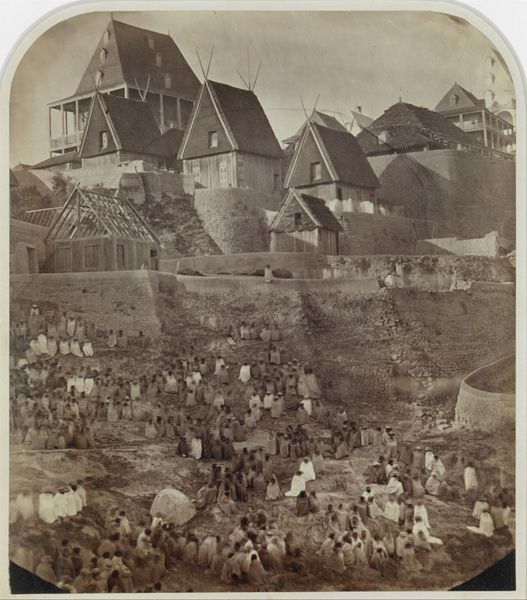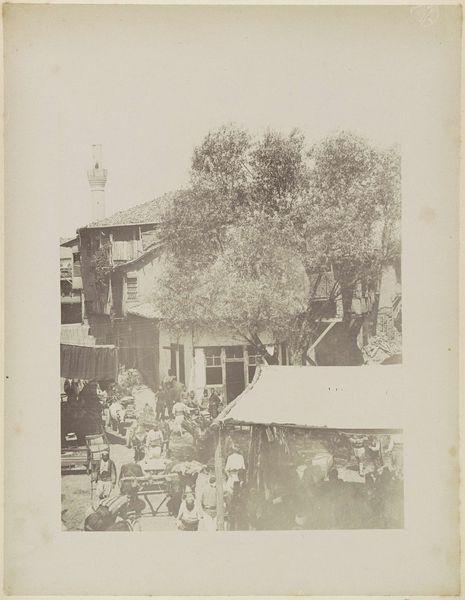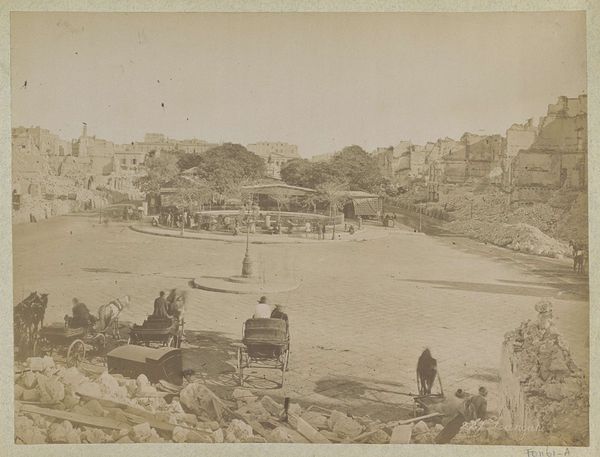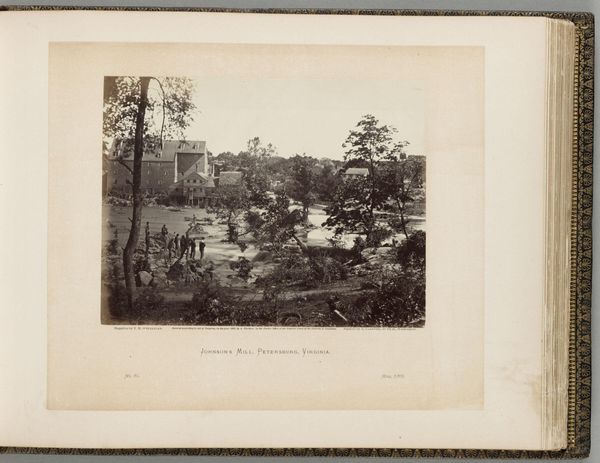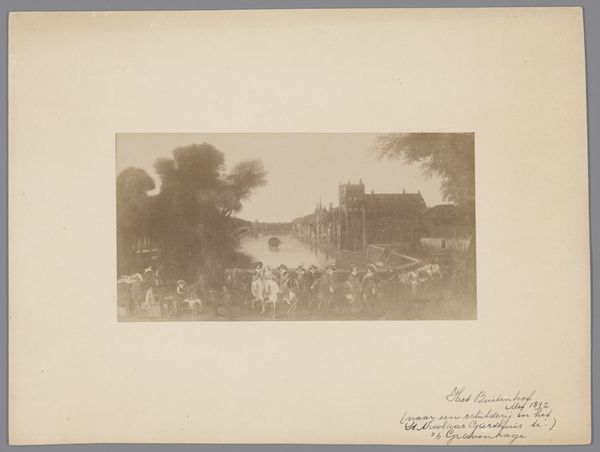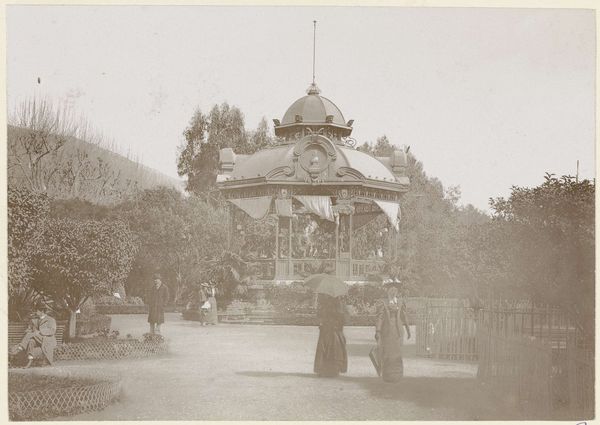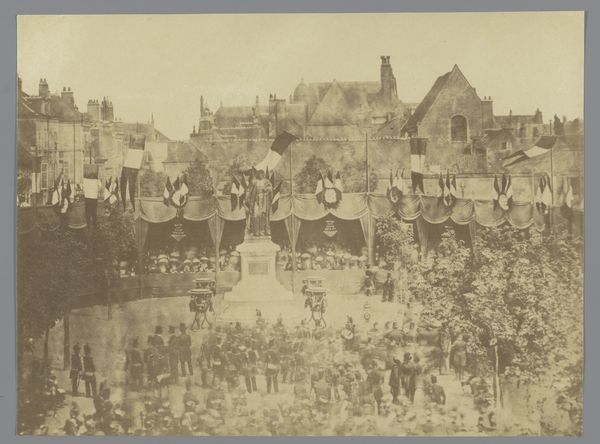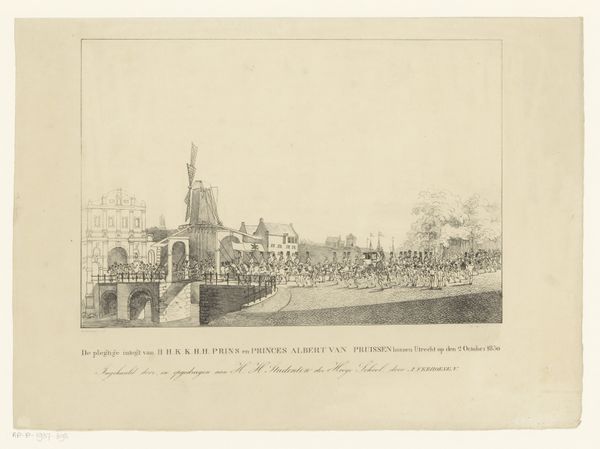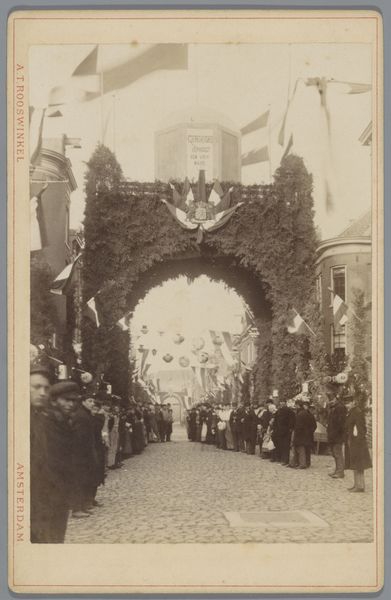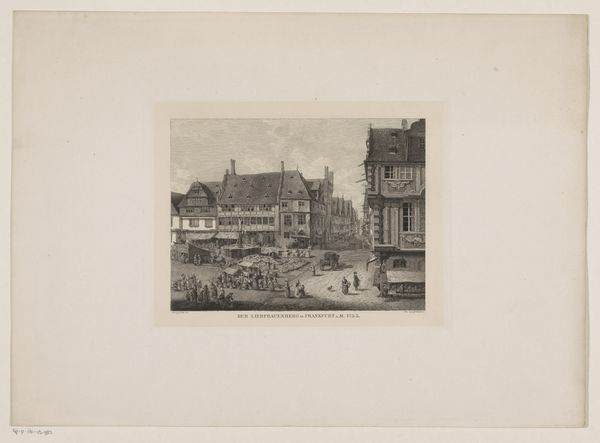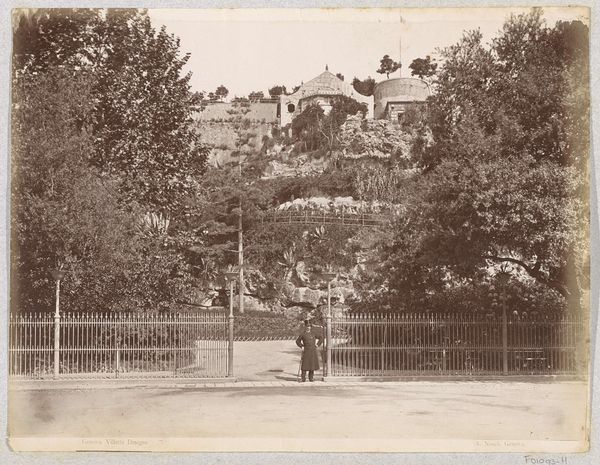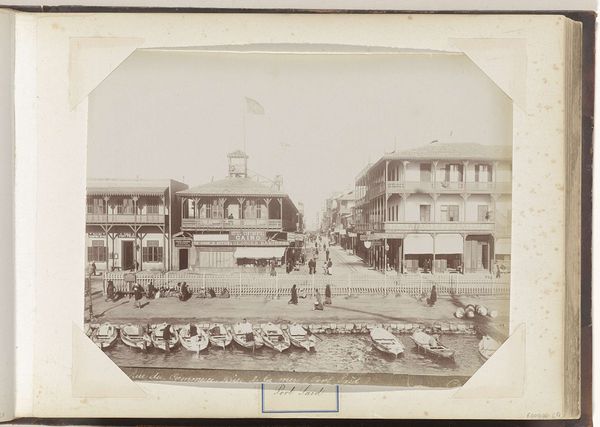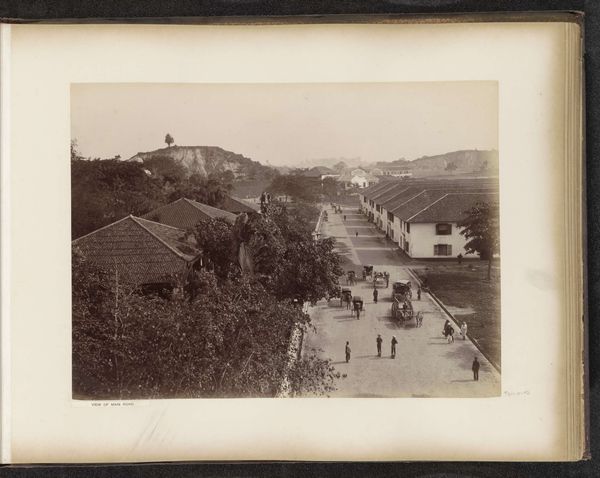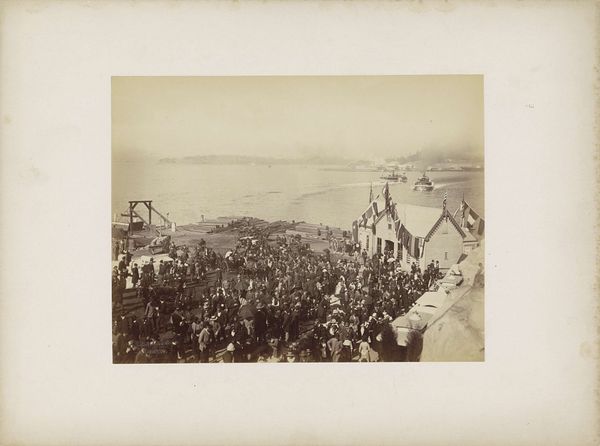
Gezicht op een tentoonstellingsterrein of stad met Oud-Hollandse huizen, met prinses Wilhelmina 1892
0:00
0:00
print, photography
# print
#
landscape
#
etching
#
photography
#
cityscape
Dimensions: height 181 mm, width 231 mm, height 228 mm, width 283 mm
Copyright: Rijks Museum: Open Domain
Curator: What strikes you about this piece, straight away? It’s titled "Gezicht op een tentoonstellingsterrein of stad met Oud-Hollandse huizen, met prinses Wilhelmina", and it’s attributed to Henry Pauw van Wieldrecht, dating from 1892. Editor: It's the sheer formality amidst, seemingly, a staged setting. Everyone is so posed and proper; the composition and light seem to mimic painting conventions. It projects a strong sense of hierarchy. Curator: Exactly. What we’re seeing is a meticulously constructed display—it's like stepping into a fabricated history lesson meant to solidify national pride, just a few years before Wilhelmina's formal ascension. Look closely, it almost functions as propaganda! Editor: I'm struck by this display of selective heritage, a nostalgic re-imagining for a burgeoning modern era. What narrative is being foregrounded and what’s left carefully outside the frame? How does the exclusion reflect dominant power structures? Curator: Van Wieldrecht was clearly tapped into constructing these kinds of celebratory moments and this cityscape serves almost like stagecraft, designed to reinforce the existing socio-political order and shape public perception during the young princess’s coming-of-age. The very act of staging a cityscape implies control. Editor: Considering the subject matter, who do you imagine primarily consumed these images? Were they widely disseminated? Were there particular motivations behind showcasing such images to the broader public at the time? Curator: Undoubtedly it was crafted for consumption by the middle to upper classes invested in perpetuating the monarchy, but also for those who felt some level of national or regional pride at that period. Prints like these were integral to cementing public sentiments through curated depictions. It’s interesting to dissect whose vision of Dutch heritage was privileged at the expense of others. Editor: It speaks to the carefully constructed narratives around power and identity during pivotal historical periods. Thank you, this photo compels us to interrogate the intentional shaping of memory through art. Curator: Precisely, and the power that images held, and still do hold, in shaping such public and personal memory is what compels my appreciation of the art.
Comments
No comments
Be the first to comment and join the conversation on the ultimate creative platform.
